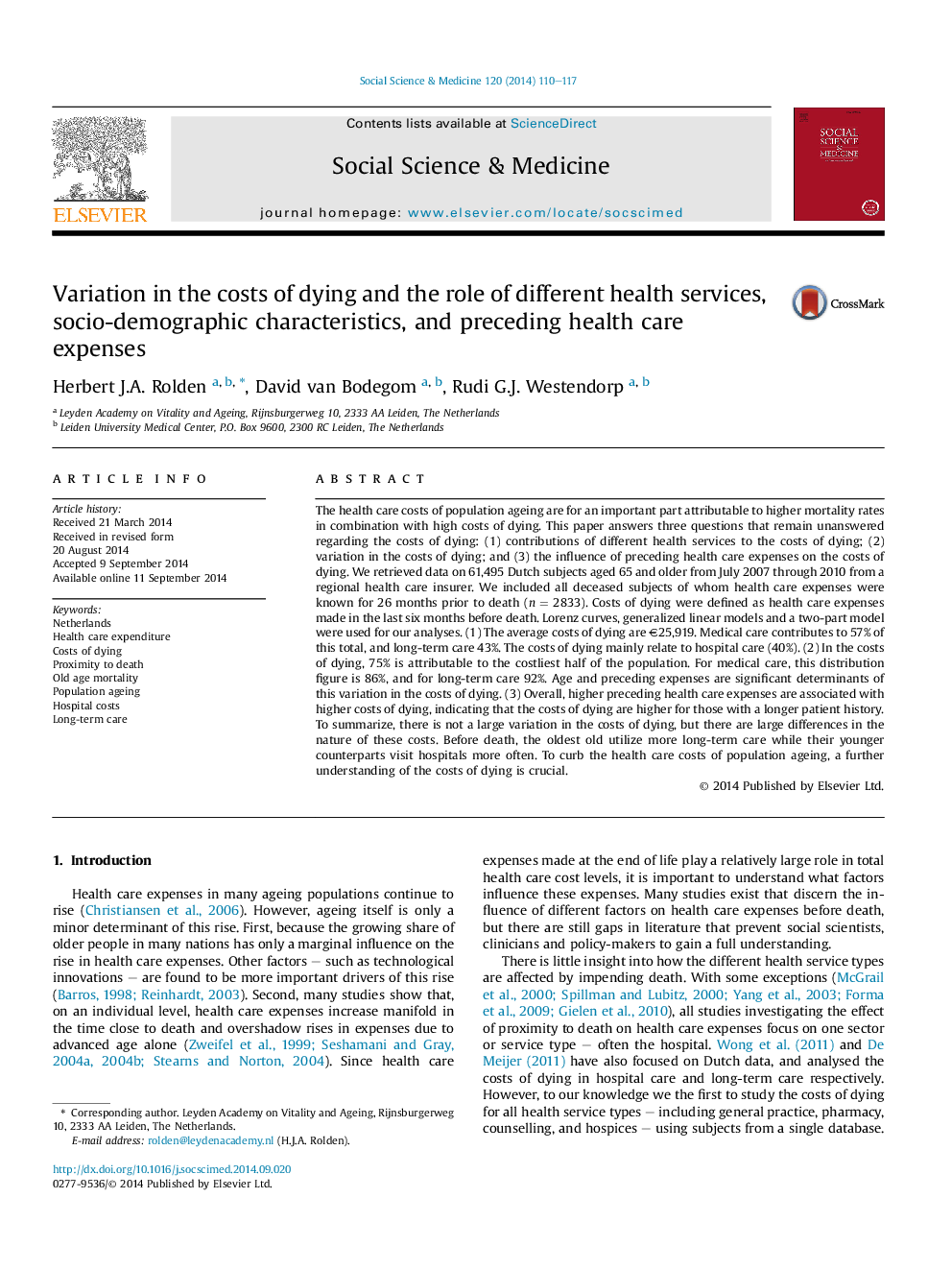| Article ID | Journal | Published Year | Pages | File Type |
|---|---|---|---|---|
| 7334537 | Social Science & Medicine | 2014 | 8 Pages |
Abstract
The health care costs of population ageing are for an important part attributable to higher mortality rates in combination with high costs of dying. This paper answers three questions that remain unanswered regarding the costs of dying: (1) contributions of different health services to the costs of dying; (2) variation in the costs of dying; and (3) the influence of preceding health care expenses on the costs of dying. We retrieved data on 61,495 Dutch subjects aged 65 and older from July 2007 through 2010 from a regional health care insurer. We included all deceased subjects of whom health care expenses were known for 26 months prior to death (n = 2833). Costs of dying were defined as health care expenses made in the last six months before death. Lorenz curves, generalized linear models and a two-part model were used for our analyses. (1) The average costs of dying are â¬25,919. Medical care contributes to 57% of this total, and long-term care 43%. The costs of dying mainly relate to hospital care (40%). (2) In the costs of dying, 75% is attributable to the costliest half of the population. For medical care, this distribution figure is 86%, and for long-term care 92%. Age and preceding expenses are significant determinants of this variation in the costs of dying. (3) Overall, higher preceding health care expenses are associated with higher costs of dying, indicating that the costs of dying are higher for those with a longer patient history. To summarize, there is not a large variation in the costs of dying, but there are large differences in the nature of these costs. Before death, the oldest old utilize more long-term care while their younger counterparts visit hospitals more often. To curb the health care costs of population ageing, a further understanding of the costs of dying is crucial.
Keywords
Related Topics
Health Sciences
Medicine and Dentistry
Public Health and Health Policy
Authors
Herbert J.A. Rolden, David van Bodegom, Rudi G.J. Westendorp,
